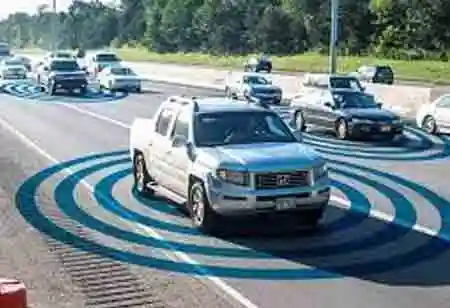THANK YOU FOR SUBSCRIBING
THANK YOU FOR SUBSCRIBING
Be first to read the latest tech news, Industry Leader's Insights, and CIO interviews of medium and large enterprises exclusively from Auto Tech Outlook

By
Auto Tech Outlook | Tuesday, June 29, 2021
Stay ahead of the industry with exclusive feature stories on the top companies, expert insights and the latest news delivered straight to your inbox. Subscribe today.
Automotive IoT allows high-speed vehicle-to-vehicle and vehicle-to-infrastructure communications in connected vehicles to improve safety and reduce traffic on the road.
FREMONT, CA: A connected vehicle describes an automobile that can connect to adjacent devices through wireless networks. Connected vehicles are a critical component in the progress of the internet of things. The applications range from connected entertainment systems linked to the driver's phone to Internet-connected automobiles with bi-directional communication with other vehicles, mobile devices, and city intersections.
The term "connected vehicle" refers to an internet of things (IoT) technology with extensive effects. Connected vehicle technology is an integral part of the Intelligent Transportations Systems government project, and several active trials are being conducted worldwide.
One of the most critical applications for the IoT automobile is safety, which may be achieved through quick vehicle-to-vehicle and vehicle-to-roadside unit connections. There are many additional examples of connected car technologies at work in the automotive IoT area.
How Does Connected Vehicle Work?
Connected vehicles can connect to a network to allow bi-directional communications among vehicles like cars, lorries, buses, trains, and other automobiles, mobile devices, and infrastructure to activate essential communications and events.
For example, in city traffic and intersection safety, the communications can allow vehicles equipped with connected vehicle technology to routinely report their whereabouts and obtain near-real-time data that prompts an automated response.
Wireless communication can also be used by connected vehicles to communicate with traffic lights, work zones, toll booths, school zones, and other types of infrastructure. The vehicle information communicated is anonymous, so vehicles cannot be monitored, and the technology is secure against fraud.
The Communications Backbone for Connected Vehicle
Intelligent Transportation Systems (ITS), a smart city and automotive IoT program, will help connected vehicle systems attain their full potential. Sensors, cameras, and RFID readers are already being used to track intersections and roadways to detect traffic congestion, automatically redirect traffic, determine distances to various destinations, and update signage. Public safety will increase as intersections become safe for pedestrians and bicycles, and adaptive traffic lighting allows emergency services to reach accident scenes faster.
As networks and AI abilities advance, traffic management systems will automatically enhance. For example, they can track traffic in real-time and utilize past data to predict where traffic congestion is likely to occur. These systems are being deployed in smart cities because of their excellent traffic management skills and their more advanced connected vehicle abilities in the future.
See Also: Top Freight Management Companies
 Copyright © 2025 AutoTech Outlook. All Rights Reserved | Privacy Policy | Subscribe | Sitemap | About us | Feedback Policy | Editorial Policy
Copyright © 2025 AutoTech Outlook. All Rights Reserved | Privacy Policy | Subscribe | Sitemap | About us | Feedback Policy | Editorial Policy 



